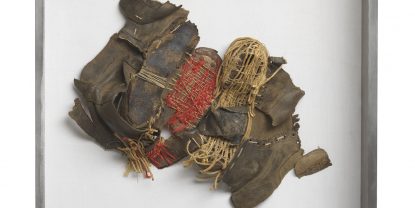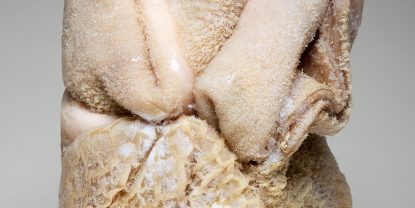Quarantarium
Group Exhibition
December 01 — December 31, 2020
Quarantine was originally designed to confine plants and animals in order to prevent the spread of contagious diseases and aquariums are enclosures in lands created to put aquatic animals and plants on display. The word “Quarantarium” is a coined word, consisting of “quarantine” and “aquarium”: containers that are enclosed with extreme care and discipline to preserve things. The former is bound by a rigid membrane and the latter is defined by translucent walls; yet, both are kept away from the community of others.
The COVID-19 pandemic has forced people to lock themselves inside their houses, reducing all their interactions and socializations to the screens of their smartphones and computers. It amounts to an imposed metaphor that has transformed our world and altered our conventional assumptions. From its very beginning, it has shown no regard for norms and expectations, and in the meantime, it has changed all the procedures and processes, turning differences into similarities. Pandemics are not only contagious by definition, but also divergent: a dystopic geography that is enclosed, yet integrated and boundless. Even though pandemics are experienced individually and personally, they create a global, collective panic.
The first universal result of the pandemic was solitude in which individuals turn to their past and their roots. The creative process of the artists of the exhibition is not a mere formal translation of the outside world, but invisible bridges between the artists’ ideas and their minds and unseen inner realms. These works are shaped by each artist’s reconsideration of the trauma that has been guiding his or her life. On the one hand, the artworks refer to a study of the individual, biological roots, and, on the other hand, they are remedies that make up for the loss that has scarred the psyche of each artist.
Sasan Abri is the photographer of urban spaces, cityscapes, and the transient moments of life. In order to execute his unique semi-impressionistic techniques in his “Nest” series, he has chosen a harsh cross-hatching approach to conveying the subject matters, shifting the status of the background with that of the foreground. Human figures in the photograph series are blurred out and vegetal objects have been rendered clearly. The alternation of the relationship between the subject and the object is the result of the artist’s contemplations in quarantine as he was experiencing his self-imposed solitude for several months.
Actualization of abstract forms and attention to the physical and architectural dimensions of objects are among the features of Anita Steinwidder’s work. Anita’s earlier works revolved around re-defining attires and making cloth collages in a conceptual fashion. Here in her “Reconstruction: Mother and Father” series, she has made a trip down the memory lane to revisit her estranged childhood. In order to create new forms, the artist has assembled the shoes that she has kept from the time she had spent with his grandparents, using a technique that is different from those of cobblers. The works represented here are following dimensional forms on the outside; on the inside, however, they are inspired by a pastoral childhood. The remains of the shoes are sewn together by the pressure of the needle to form rotten bodies, using rough threads in continuous and discontinuous rows, in a painstaking, mediation-like process.
Peter Garmusch is an artist who loves exploring new territories and making journeys with no sense of belonging to his hometown: he travels to near and faraway places to incorporate his random observations into his artworks, trying to be unbiased by conventional assumptions. By upsetting the origin-destination equation and confining everything to the starting point, the pandemic has deprived Garmusch of his ability to travel, transforming the physical, geographic routes into imaginary, subjective paths in his studio. This is what has led to the creation of “Studio Vienna” series. By interweaving roots and textures, Garmusch has taken a metaphoric look at the pandemic and time, turning common human and animal organs that has reached the freezing point, into cold, formless photographic shapes.
The projects exhibited in “Quarantarium” are the result of conversations between the three artists through virtual ports. They are now exhibiting their works through that very same glass window: the three bodies of works are interwoven with hope, sorrow, self-awareness, and growth, while their substance is shaped by individuality. These works are the result of a consistent comprehension of the artists’ past and their inner worlds and an attempt to heal the wounds that had not been opened before the pandem.


